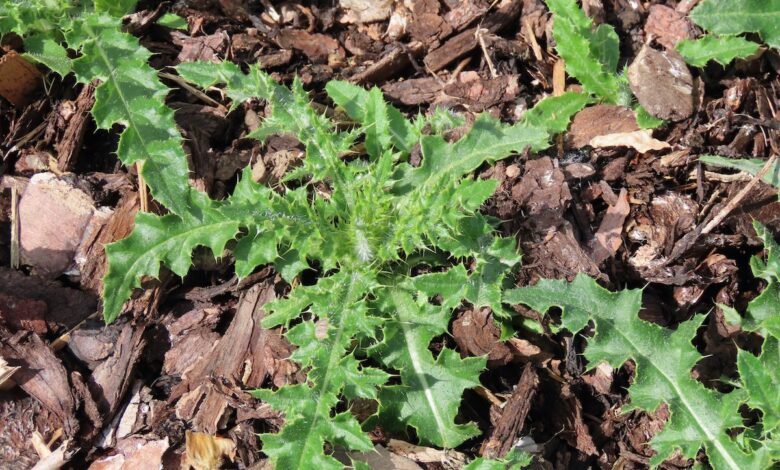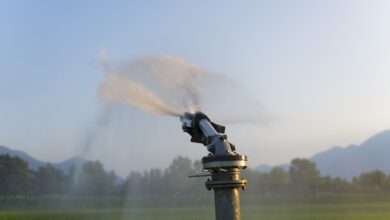Battling Pesky Weeds: Calgary’s Ultimate Guide to Weed Control

Introduction
Weeds are the bane of many Calgary homeowners‘ existence. These pesky invaders appear overnight and can quickly take over your lawn and garden if left unchecked. While weeds may seem impossible to control, many effective weed control methods are available to Calgary residents. This guide will explore the most common weeds found in Calgary and provide tips on how to get rid of them for good. You can win the battle against weeds and enjoy a lush, healthy landscape with effort and consistency.
The Most Common Calgary Weeds
Dandelions
Dandelions are likely the most well-known and frustrating weed in Calgary. These pesky weeds grow low to the ground with jagged leaves and bright yellow flowers. Dandelions spread rapidly through wind-blown seeds and have deep taproots, making them difficult to pull by hand.
Creeping Charlie
Creeping Charlie, or ground ivy, is a low-growing weed with round, scalloped leaves. It spreads through creeping stems that root at the nodes. Left uncontrolled, advancing Charlie forms dense mats that crowd out grass and other plants.
Crabgrass
Crabgrass is a common culprit in Calgary lawns. It grows low to the ground and has broad, light green leaves with pointed tips. Crabgrass thrives in the summer, spreading through its prolific seed production. It can quickly invade bare spots and thin lawns.
Broadleaf Plantain
Broadleaf plantain is characterised by its broad oval leaves with parallel veins growing in a rosette shape. It produces tall seed spikes packed with hundreds of tiny seeds. Broadleaf plantain is challenging to control once established.
Foxtail Barley
Foxtail barley is an annual grassy weed identified by its bristly seed heads resembling fox tails. It sprouts early in spring and can produce up to 400 seeds per plant. Foxtail barley crowds out lawn grass and causes thin, patchy areas.
Weed Control Methods
Manual/Mechanical Removal
The most basic weed control method is manually digging, hoeing, or pulling weeds. This works best for a limited number of young weeds with shallow roots. Make sure to remove the entire root system to prevent regrowth. Follow up periodically to catch any new weeds.
Mowing
Regular mowing at the proper height for your grass type helps limit weed growth. Set blades high to encourage deep grass roots. Time mowing to prevent weeds from going to seed. Cutting alone won’t eliminate established weeds but is an integral part of an integrated approach.
Smothering/Solarization
Smothering weeds by blocking sunlight can be effective for large areas. Solarisation involves covering areas with clear plastic for several weeks to “bake” and kill weeds. Organic mulches like wood chips or hay also smother weeds. Reapply mulch as needed to deplete weed seeds in the soil.
Corn Gluten Meal
Corn gluten meal is an organic pre-emergent herbicide derived from corn. It prevents seeds from germinating and emerging but does not affect established weeds. Apply in early spring before weed seeds sprout. Reapply every 4-6 weeks through the summer.
Vinegar
Household vinegar effectively controls some weeds, especially annuals. Use horticultural vinegar with at least 20% acetic acid for best results. Spot treat weeds, avoiding grass and desired plants. Avoid inhaling vinegar spray mist.
Boiling Water
Pouring boiling water directly on weeds is an inexpensive, non-toxic method. It works best on young weeds and controls a limited area. Take care to avoid scalding yourself or beneficial plants. Repeat as new weeds emerge.
Flame Weeding
Flame weeders use propane heat to destroy weeds down to the roots. Direct the flame briefly at weed growth to cause lethal plant tissue damage. Go slow and use caution. Avoid flame weeders in dry conditions or around flammable materials.
Herbicides
Herbicides are chemicals that kill plants. Non-selective herbicides like glyphosate destroy all plant material, while selective herbicides only impact certain weeds. Use extreme care to avoid damage to desired plants. Follow the label directions strictly.
Weed Control Calendar
Timing is critical for effective weed management. Here is a general calendar for deploying various weed control efforts in the Calgary area:
- Spring: Apply corn gluten meal. Mow lawns low. Dig/pull winter annual weeds.
- Early Summer: Spot treats emerging weeds. Solarize areas. Reserve bare patches on the grounds.
- Mid-Summer: Vinegar spray weeds. Stay on top of mowing. Hand-pull perennial weeds.
- Late Summer: Apply fall pre-emergent herbicides. Continue spot treating. Overseed lawns.
- Fall: Aerate and overseed lawns. Dig out persistent weeds. Mow leaves to prevent smothering grass.
- Winter: Cover beds with mulch. Trim back dormant perennial weeds. Plan next year’s approach.
Consistency is Key
Controlling weeds takes commitment and consistency in applying multiple methods. Keep going if you see immediate results. Deplete the weed seed bank in your soil over time. A healthy, thriving lawn and garden is the best defence against weeds returning. With regular care, you can keep your Calgary landscape weed-free and lush. Weed control in Calgary is critical for an effective strategy.



